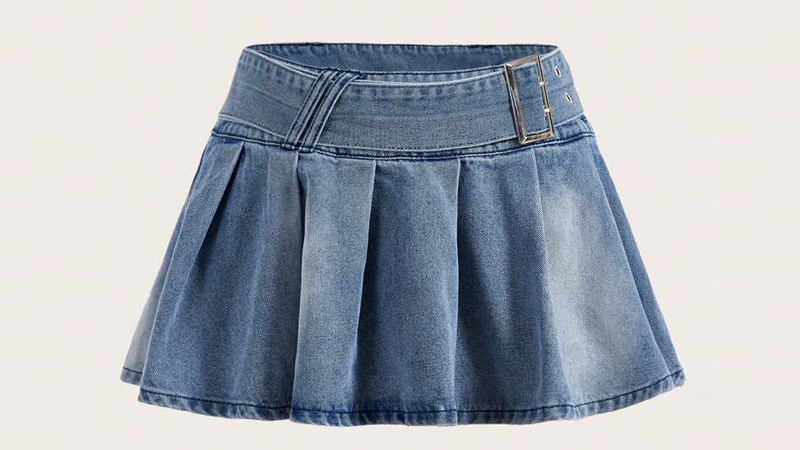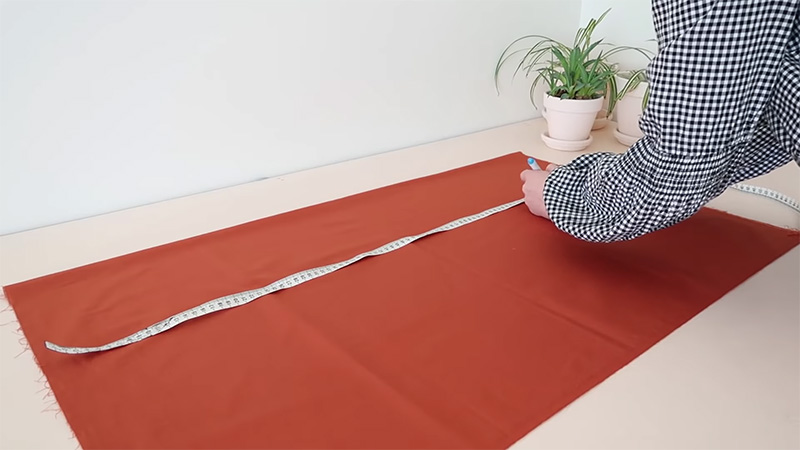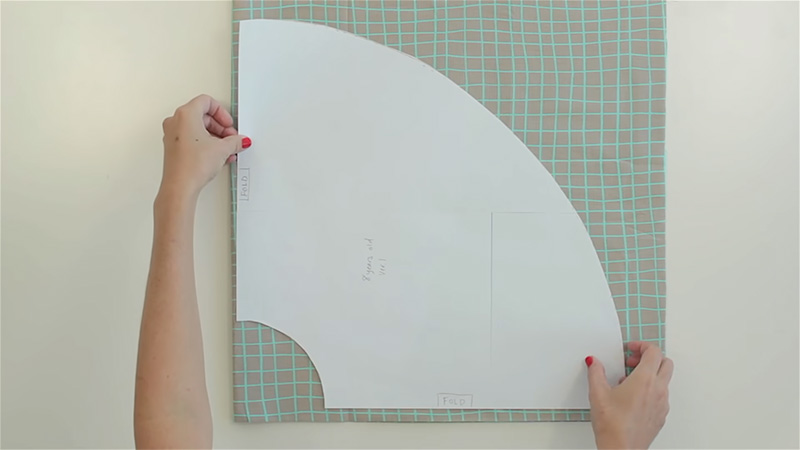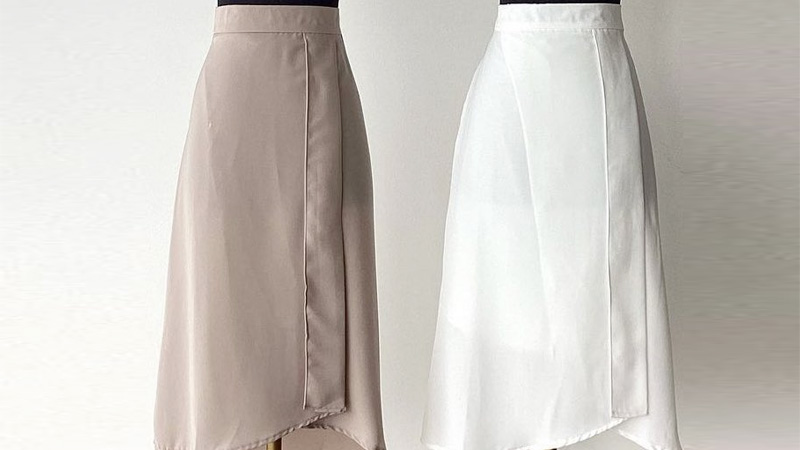When embarking on a sewing project to create the perfect skirt, determining how much fabric you’ll need is one of the most crucial considerations.
The fabric quantity required can significantly impact your skirt-making endeavor’s fit, style, and success.
Whether you’re a seasoned seamstress or a sewing novice, this guide will help you navigate the intricate process of calculating fabric requirements with precision.
From selecting your preferred skirt style to taking accurate measurements and considering factors like fabric width and pattern alignment, every step plays a vital role in ensuring your finished skirt matches your vision.
In this comprehensive exploration, we’ll break down the process into simple, actionable steps to help you confidently estimate how much fabric you need for your next skirt project.

How Much Fabric Do I Need for a Skirt?
The amount of fabric you need for a skirt can vary depending on several factors, including the style of the skirt, your body measurements, and the width of the fabric you plan to use.
Here’s a general guideline to help you estimate how much fabric you’ll need for a basic A-line skirt:
Choose Your Skirt Style
The first step in calculating the fabric you need for a skirt is selecting the style you want to create. Whether it’s a classic A-line, a twirly circle skirt, a gathered design, or a sophisticated pleated skirt, your choice will significantly affect the fabric required.
Different styles have distinct shapes and fullness, so understanding the style you’re aiming for is crucial.
Gather Necessary Measurements
To accurately measure the fabric you’ll need, you’ll first need to gather some essential measurements:
- Waist Measurement: Measure your waist circumference at the point where the skirt’s waistband will sit. Make sure to measure snugly but not too tight.
- Hip Measurement: Measure the fullest part of your hips, usually a few inches below your waist. This measurement is crucial for skirts that are fitted at the hips.
- Skirt Length: Decide on the desired length of your skirt. Measure from the waist down to where you want the skirt to end. Standard skirt lengths include above-the-knee, knee-length, midi-length, and ankle-length.
Determine Fabric Width
Find out the width of the fabric you plan to use. Standard fabric widths are typically 45 inches (114 cm) or 60 inches (152 cm). The fabric width will impact how you lay out your pattern pieces and how much fabric you’ll need.
Calculate Fabric Requirements
Now that you have your measurements and chosen skirt style, you can use the following formulas as starting points:
- For an A-Line Skirt: Waist Measurement + Hip Measurement + Length + Hem Allowance = Total Fabric Length Needed
- For a Circle Skirt: (Waist Measurement ÷ 6.28) + Length + Hem Allowance = Total Fabric Length Needed
- For a Gathered Skirt: (Waist Measurement × Fullness Factor) + Length + Hem Allowance = Total Fabric Length Needed
- For a Pleated Skirt: (Waist Measurement + Total Pleat Width) + Length + Hem Allowance = Total Fabric Length Needed
These formulas estimate the fabric you’ll require for your specific skirt style. However, remember that more intricate designs, larger sizes, or specific pattern matching may require additional fabric.
Additional Considerations
Beyond measurements and calculations, take into account other crucial factors. If your fabric has a distinct pattern or print, you may need extra fabric to ensure pattern alignment at the seams and the waistband.
Don’t forget to factor in seam allowances, typically around ¼ inch or ½ inch, depending on your pattern and preferences.
Buy Extra Fabric
To be safe, purchasing slightly more fabric than your calculated amount is wise. This extra fabric is a buffer for unforeseen errors, adjustments, or future alterations without running out during your sewing project.
Choose the Right Fabric
Appropriate fabric is critical to achieving your skirt’s desired look and feel. Consider fabric weight, drape, pattern, and color to ensure your choice aligns with your design and purpose.
A fabric’s characteristics can significantly influence the outcome of your project.
How Many Yards of Fabric Do I Need for a Skirt?

The fabric needed for a skirt depends on the style, size, and desired length. As a general guideline for a basic knee-length skirt, you might require about 1.5 to 2.5 yards (approximately 1.4 to 2.3 meters) of fabric.
This estimate includes the main skirt panel, waistband, hem allowance, and seam allowances. However, more fabric may require complex designs, larger sizes, or specific fabric patterns.
Always check the sewing pattern instructions if you use one, as they often provide precise fabric requirements tailored to the chosen style and size.
To ensure you have enough, consider buying more fabric than your calculated amount.
How Much Fabric Do I Need for a Skirt in Meters?

To determine how much fabric you need for a skirt in meters, you’ll need to consider the style of the skirt, your body measurements, and the fabric width.
Here are the approximate fabric requirements for each of the mentioned skirt styles in meters:
A-line Skirt
For a simple A-line skirt, you can estimate that you’ll need about 1.4 to 2 meters (1.4 to 2.2 yards) of fabric, assuming a standard fabric width of 1.1 meters (44 inches).
This estimation is based on a knee-length skirt. You may need more fabric if the skirt is longer or if you have a larger waist or hips.
Circle Skirt
A full-circle skirt typically requires more fabric due to its circular shape. You might need approximately 2.5 to 3.5 meters (2.5 to 3.8 yards) of fabric for a knee-length circle skirt, depending on your waist and hip measurements.
For a longer skirt, you’ll need more fabric.
Gathered Skirt
The fabric requirements for a gathered skirt can vary widely depending on the desired fullness. As a general guideline, you might need around 2 to 3 meters (2 to 3.3 yards) of fabric for a knee-length gathered skirt.
However, you may require more fabric if you want a very full and voluminous skirt.
Pleated Skirt
The fabric needed for a pleated skirt depends on the number and width of wrinkles. For a simple knee-length pleated skirt, you might need approximately 1.5 to 2 meters (1.5 to 2.2 yards) of fabric.
If the wrinkles are broad or numerous, you may need more fabric.
What is a Good Skirt Length?

The ideal skirt length varies from person to person and depends on individual preferences, body shape, and the occasion.
Here are some standard skirt lengths and when they might be considered “good” choices:
Mini Skirt (Above the Knee)
Mini skirts are typically 14 to 18 inches long and are often considered youthful and fun. They can be a good choice for casual outings or parties and help elongate the legs.
However, they may not be appropriate for more formal or conservative settings.
Knee-length Skirt
Knee-length skirts typically fall just at or slightly above the knee. These are versatile and appropriate for various occasions, including work, casual outings, and semi-formal events.
They can be a flattering choice for many body types.
Midi Skirt (Calf-length)
Midi skirts fall below the knee and typically reach mid-calf. They are a popular choice for a classic and modest look. Midi skirts can be worn for work, brunch, or dressier occasions and often have a timeless appeal.
Maxi Skirt (Ankle-length)
Maxi skirts extend to the ankles. They offer a relaxed and bohemian vibe and are great for casual wear, beach outings, or summer events. Maxi skirts can be remarkably comfortable and stylish in warm weather.
Tea-length Skirt
Tea-length skirts fall between the calf and ankle, usually around the mid-shin. They are a classic choice for more formal events, including weddings and garden parties.
Tea-length skirts are considered elegant and offer a vintage touch.
Floor-length Skirt
Floor-length skirts touch the ground and are the most formal option. They are often chosen for black-tie events, galas, or formal weddings. Floor-length skirts create a dramatic and elegant look.
FAQs
Can I use different fabrics for the skirt’s main body and waistband?
Yes, it’s possible to use contrasting or complementary fabrics for the main body and waistband of the skirt. Ensure you calculate the required yardage for each fabric separately.
What if my fabric width differs from the standard 45 or 60 inches?
You must adjust your calculations accordingly if your fabric is wider or narrower. Divide or multiply the width to fit the standard width used in the formulas.
How can I ensure my skirt’s fabric doesn’t stretch or distort during sewing?
To prevent stretching, consider interfacing on waistbands or areas where stability is needed. Additionally, handle stretchy fabrics with care and use appropriate sewing techniques.
Are there any eco-friendly options for choosing fabric for my skirt?
Absolutely! You can choose sustainable and eco-friendly fabrics like organic cotton, Tencel, or recycled materials for your skirt, contributing to a more sustainable fashion industry.
Can I create a skirt without a sewing pattern?
You can create a skirt without a sewing pattern, but it may require more improvisation and draping skills. In such cases, you must make measurements and create your pattern pieces.
To Recap
Determining the right amount of fabric for your skirt is an essential aspect of any successful sewing project. By following the steps outlined in this guide, you can achieve a well-fitting garment that matches your style and vision.
The choice of skirt style, accurate measurements, fabric width, and careful consideration of additional factors like pattern alignment and seam allowances are all critical factors in the fabric estimation process.
Extra fabric is often a wise investment to account for unforeseen errors or future alterations.
With these insights and calculations, you can confidently begin your skirt-making journey, creating beautifully crafted skirts that suit your tastes and preferences.
Leave a Reply